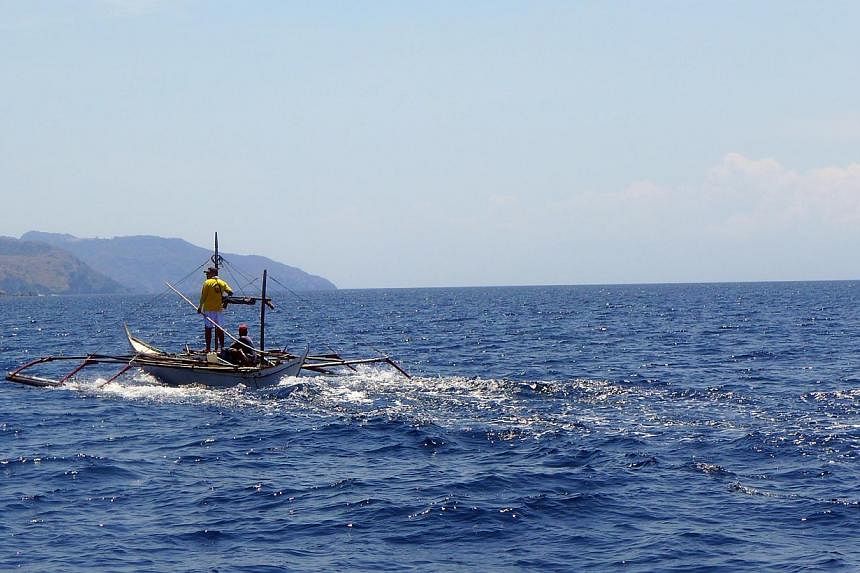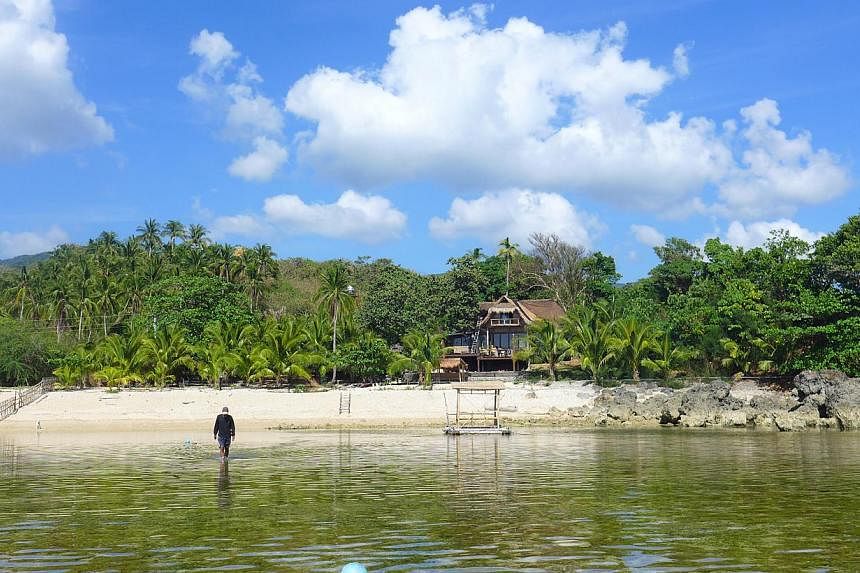Intrigued by the life of a terrifying Japanese soldier, I journey to his jungle hideout on an obscure Philippines island.
Imperial Japanese Army soldier Hiroo Onoda was the last war straggler to surrender in 1974, when he emerged from Lubang island, still in his uniform and bearing a samurai sword, 30 years after World War II had ended. Before that, he had killed villagers and skirmished with police forces, believing that the world was still embroiled in conflict.
When he died in January this year, he was a nostalgic symbol of an old Japan that lived by a different code of honour and was selflessly loyal to the emperor-god.
I plan to trek through his jungle terrain for a sense of how he survived by his wits and the natural abundance of the land. Exploring Lubang, a place of graceful ruggedness, also appeals to me.
Lubang is only 130km south-west of Manila, but I may as well be visiting another world. Commercial flights and direct ferries from Manila no longer ply the route, I discover.
I contact Uncharted Philippines (www.unchartedphilippines.com), an adventure company with a niche in less-known destinations, and founder Leo Cuesta suggests a couple of contacts.
The Lubang Tourism Facebook page turns out to be a clone, so no response to my e-mail. After a lapse of island time, I hear from Ms Nori Santos, 57, a retired chemistry teacher who owns the Kaypalad homestay on the island, and shuttles between homes in Manila and Lubang.
In April, she sets my trip in motion. She books a three-hour van ride (700 pesos or S$20) between Manila and the port of Calatagan, for both of us and her teenage son Alec, plus one seat for my luggage. The ride turns out to be Lubang on wheels, for the passengers are islanders.
We trundle past the active Taal volcano and estates owned by the Zobel dynasty, whose immense wealth is derived from banking, cane sugar and other businesses.
Satin sea
At the port, our ferry Lucky Benjamin is not sailing after all, so we hop onto God's Grace III (400 pesos). Such are the vagaries of timetable and tide in rural Philippines.
We sail over a satin sea and arriving at tiny Tilik port on Lubang, are greeted by Ms Santos' German-Swiss partner Christian Schmutz, 66, also a former chemist.
Locals nickname him Fast and Furious, and that sums up his jeep-driving style when we fly over potholes for 30 minutes to the beach where his outrigger is moored.

Their friendly neighbour, copra farmer Carling Delara, 79, is on the beach and delighted that I am on the trail of Onoda. He mimes how he dodged bullets from the Japanese, or "Hapon", soldier, as Lubang dwellers call him. Myth begets myths.
Kaypalad (www.facebook.com/kaypalad.binakas), which means blessed in Tagalog, has such a secluded location on Lubang that no road leads to it. It is faster to take a 10-minute boat ride over crystalline waters to Kaypalad. But when the tide is against us, we have to trek 2.3km to it, which is what I do another afternoon.
I spend four nights at Kaypalad, my base, and Ms Santos and I reshape my itinerary as we go. The highlight is the Onoda Trail, which is over an hour away from my resort by boat and jeep. I have asked Lubang Tourism (e-mail lubangtourism@gmail.com) for two treks on the Onoda Trail, first a gentle two-hour jaunt, then a whole-day hike.
Unimaginably alive
On my gentle trek (300 pesos a trekker), my guide Jerry Villaflores, 59, says he was a teenager when Onoda surrendered in 1974. He recalls: "I didn't believe he was still living until I peeped at him."
The moment I wander into the virgin jungle, I can imagine that Onoda was not a hungry man. Food abounds - pendulous jackfruit, pineapples sprouting from the ground and even eggs inside the hanging nest of the little pipit bird.
In his autobiography, No Surrender: My Thirty-Year War, Onoda recounts he boiled green bananas in coconut milk with a little meat. It tasted like "overcooked sweet potatoes", but it sufficed as a staple.
Water is plentiful on the mountainous island of 113 sq km, one-sixth the size of Singapore.
Onoda had three comrades at first, but they surrendered or died until he was the last man standing in 1972. The men had no qualms stealing fruit preserves from a school, shooting a cow for meat every few months or pilfering clothes.
"This did not trouble our consciences. It is normal in guerilla warfare to try to acquire guns, ammunition, food, clothing and other supplies from the enemy," he reasoned.
On the uphill trail, Mr Villaflores re-enacts Onoda's secretive movements. "He took short cuts to move fast. He was always in a hurry - someone may be watching him. He had many trails and caves for shelter."
We set foot in a small, airy cave where Onoda might have slept, according to Lubang officials, based on signs of human presence found inside. All I see now is a shadowy, man-sized nook perfect as a hiding place, and a baby stalagmite.
In a second cave, small and deep, and home to tiny swifts, we squeeze through a passage. My guide shines his torch on a pink fledgling with just a few feathers.
Outside, there is a glimpse of the endless sea that separated Onoda from the world. "There may be many undiscovered caves," Mr Villaflores says and tells me about the day-long trek which will cover more caves, the side of a mountain and a river which sustained the fugitive.
I do not anticipate what happens next.
I drop by to see Ms Gina Julaton, a senior tourism operations officer. She says the trail is arduous and has not been cleared for a year. It attracts half a dozen trekkers a year.
She is reluctant to let me go so I assure her I have trained and quote my guide, who thinks the route is challenging but possible for me. She acquiesces and we discuss plans for the Onoda Trail. "Onoda attracts international attention especially from the Japanese. There is nothing else like it in the world," she says.
Lubang has plans to add signs, a zipline and a visitor centre stocked with Onoda's sword, uniform and artefacts.
Visitor figures have actually shrunk, as the airport is being upgraded and may receive commercial flights only next year or later. Last year, 20,770 visitors entered Lubang, which is populated by farmers and fishermen. Around 2008, the flow of tourists was double at 49,000 arrivals.
Zero crime
Ms Julaton remains optimistic, pointing to the appeal of Lubang: "It is pristine. Life is very peaceful. There is zero crime rate and zero jail occupancy. Tourists will be safe."
That evening, however, she calls to say the day-long trail is unsafe because it was not maintained. It is off.
I try not to be disappointed, knowing that the best travel plans can unspool in a flash. I have more time now to seek Onoda narratives, explore Lubang and linger in Kaypalad.
Among the islanders I meet is Ms Angie Villamar, 63, a retired medical technologist. As a child, Onoda was a bogeyman. Everyone returned early from the river where they washed clothes and bathed.
In her early 20s, the last of Onoda's three companions, Kinshichi Kozuka, was shot in 1972. He was dead on arrival at her 25-bed hospital.
When news broke, Lubang was swamped with Filipino and Japanese officials and reporters. On the lighter side, Ms Villamar, who owns the Protacio's Beach House resort, partied at the military installation with the visitors and had a Japanese pen-pal.
In Vigo, Mr Manuel Rifol Villaflores, 72, a retired technician, talks about mixed emotions. "If you ask old people, they have bad memories. Others admire his ideals and determination, especially younger people."
Mr Benjamin Tria, 62, mayor of Looc municipality on Lubang, says: "Onoda did a lot of damage in Looc. To be honest, he was not popular. Filipinos are forgiving. When he returned, he was welcomed warmly."
He looks ahead to a brighter day in tourism. He describes plans to build a highway across the scenic municipality and mentions new dive sites rich in sharks, barracudas and vibrant reef fish.
Windswept
On our boat tour, each island looks more isolated than the other and beyond is the shining South China Sea. The mayor loves Bacabac beach, part of Golo island, with its clear deep water, elegant rock formations and long sliver of beach.
My last day is spent enjoying the beauty at and around Kaypalad.
I trek along a river to the Hulagaan Falls. When I listen, it is a singing jungle, filled with the sound of cascades and cicadas.
I return for a sour, soupy lunch of fish-head sinigang and am amused by the Kaypalad story. Apparently, Mr Schmutz had been exploring Philippine islands to fulfil a fantasy of "a cottage, a cold beer and an eternal horizon".
On a flight over Lubang, he looked down and declared: "That's my island."
The couple bought a piece of land on a far corner, built Kaypalad as an island home in 2008 and later opened it to guests.
Visitors stay in two thatched huts or set up tents. My cottage, big enough for four, has a loft, window shutters with mother-of-pearl insets and a semi- outdoor shower.
There is such utter peace that when fishermen splash by in boats, it seems like they are talking outside my door, and soon the inky night is filled with imagined footfalls.
But I enjoy Kaypalad by night or by day, when I walk to the windswept edge of the property. I linger on a giant bench under a magnificent tree, a lovely reading nook. And I tramp uphill for a panorama of blue surf. Ms Santos says: "You can't get more natural than this. I call it graceful ruggedness."
The real story
On my last evening, I spy a man and his teenage daughter on the beach resting on a log. It turns out that he is Mr Peter Morris, 67, a former British mercenary and writer.
He talks about Onoda's abiding mystery. When he mentions the secret caves he found, I wish I had one more day to explore the jungle with him.
He says he penned a poem about placing his palm at a stream's edge and imagines Onoda doing that in the past.
"The real story of Onoda is far more fascinating," he surmises. "There was a certain element of fraternising with the enemy. A woman said she supplied rice to him and received trinkets in return, which she sold in Manila."
In the fading light, he says: "There's magic in the Onoda story because it is so inconclusive."
Follow Lee Siew Hua on Twitter @STsiewhua
This concludes a five-part series on active travel.




